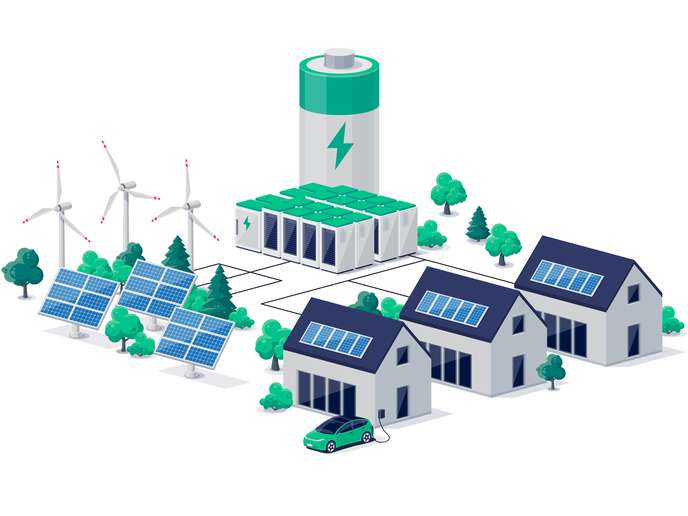Better managing fluctuating supply and demand creates a starring role for renewables
The global energy infrastructure landscape is rapidly evolving, from primarily large-scale centralised generation and distribution to a mix including small- and medium-scale distributed energy resources (DERs) and energy storage systems. These have a growing contribution of intermittent renewable energy sources (RESs). With this complexity comes flexibility for mix-and-match depending on real-time supply and demand. Leveraging it can be accomplished with virtual power plants (VPPs). The EU-funded EdgeFLEX project is expanding the current VPP model with a VPP system integrating multiple layers of control that paves the way to a fully renewable energy system.
Large-scale networks integrating local hubs
Homes and communities are increasingly producing and storing energy locally. From consumers, they have evolved into prosumers – both producers and consumers. Additionally, demand-side management has appeared, using incentives that encourage customers to change their energy consumption patterns. VPPs have been around for about two decades, networking and optimising DERs including those employing RESs, balancing the variable generation and flexible demand. EdgeFLEX is enhancing their operation with its novel multilayer VPP architecture that integrates frequency and inertial response control concepts with dynamic-phasor-driven voltage control and leverages 5G communications. The platform will support local energy communities and other forms of energy-related citizens' organisations with enhanced demand-side management in which 5G-powered edge clouds link dispersed devices in near real time. It will also enable VPPs to interact with markets offering ancillary services that help grid operators maintain a reliable electricity system.
Optimising fast edge-type services and slow intraday market dynamics
EdgeFLEX has developed hardware and software solutions supporting its VPP platform, including edge-connected units for monitoring and control of fast dynamics; a novel 5G application programming interface for edge-connected device management; and the FlexOffer protocol facilitating automated flexibility trading for prosumers and other actors throughout the day. The project is complementing the theoretical and modelling outcomes with three field trials and laboratory tests. The consortium is also actively contributing to standards and European-level regulations that reduce barriers to uptake. For example, its edgePMU device that improves grid observability has been included in the standards of the 3rd Generation Partnership Project, or 3GPP, uniting seven telecommunications standards development organisations for 3G and beyond. EdgeFLEX is also exploring financial tools and business scenarios to simplify investments in RESs beyond subsidy schemes. Now in its final year and with 21 peer-reviewed articles to date, the team is preparing to summarise pilot and lab results. EdgeFLEX and its multilayer VPP platform and technologies could soon be supporting edge-connected monitoring devices, local communities and flexibility markets on the road to a fully renewable, dynamically adaptive and stabilised energy system.
Keywords
EdgeFLEX, VPP, edge, distributed energy resource, RES, 5G, renewable energy source, virtual power plant



